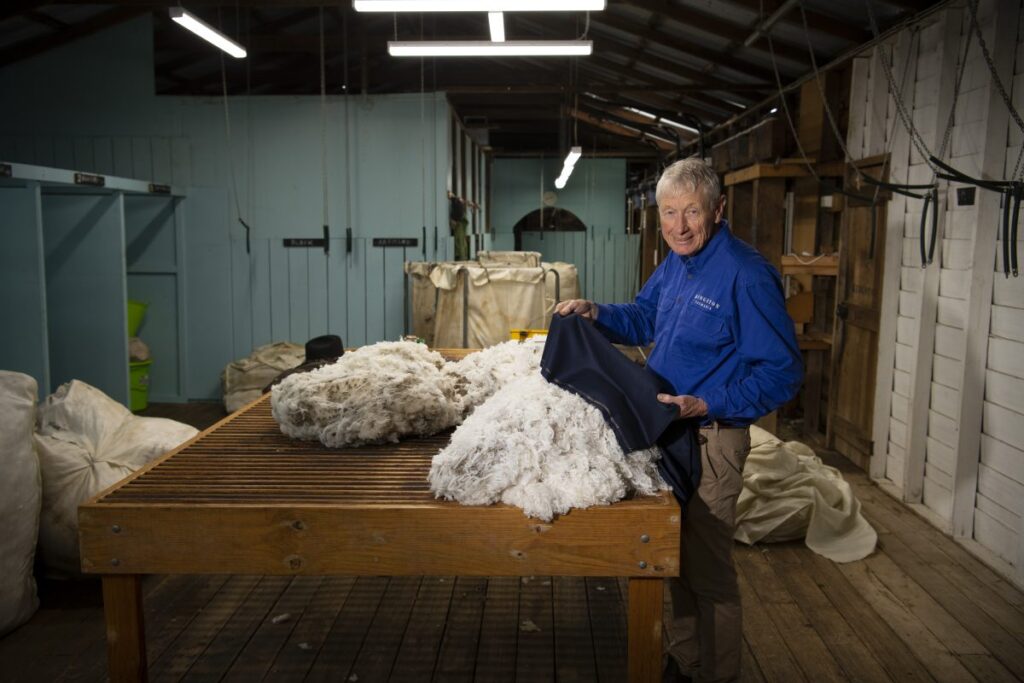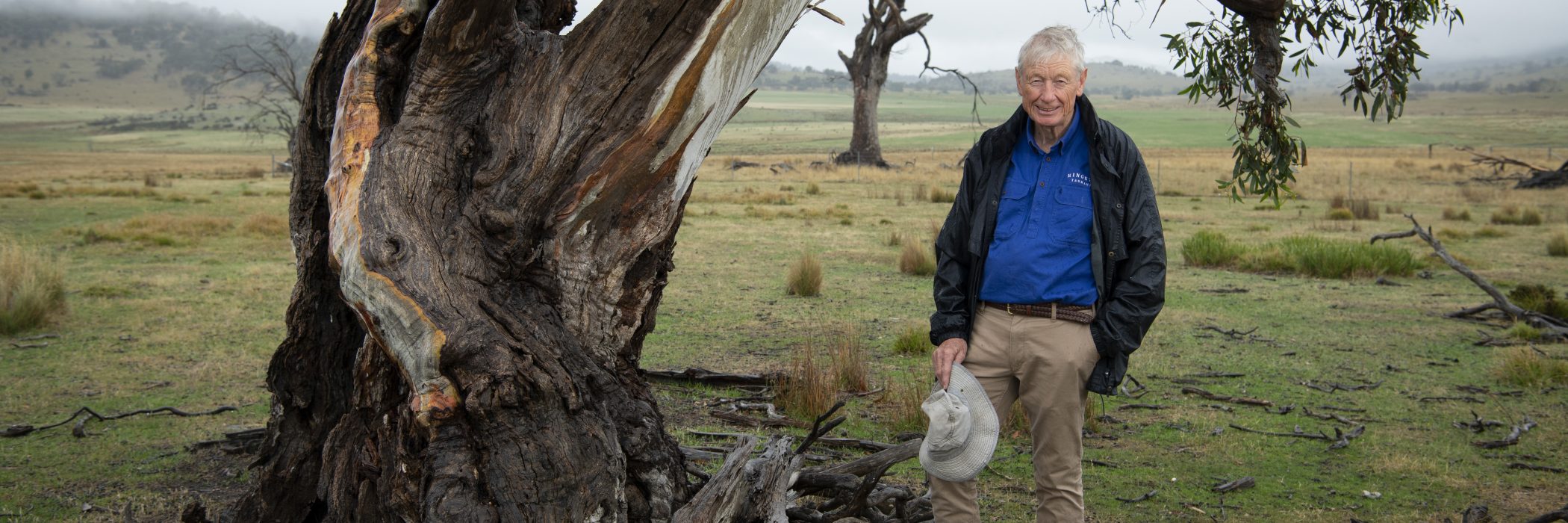Farming for the future
Story by Amelia Caddy, Bush Heritage Australia
Simon Cameron gestures to an area at the far end of his Kingston property where the valley floor looks slightly darker than the sheep-dotted pastures around us. “That’s where the native grasslands are,” he says.
Brown and featureless, the grasslands he’s referring to don’t look like much from a distance, but they – and the grassy woodlands that creep up the hills around them – are some of the last remaining examples of what the Tasmanian Midlands, a biodiversity hotspot, looked like before European settlement.
What’s helped these precious remnants survive? Generations of responsible land management – Kingston, a Merino wool-growing farm, has been in the Cameron family since 1905. Simon credits his father, Ralph, for instilling in him a deep respect for the land. But he says it wasn’t until he received a government report in 2005 that he truly understood the significance of what he was protecting.
The report found that Kingston contains about 8 percent of all remaining Kangaroo Grass Grasslands in Tasmania, 12 threatened plant species and habitat for many threatened animals. Given these findings and the fact that about 70 percent of the region has been cleared since the 1800s, the report stated Kingston was likely ‘a place of national significance’.
“That was a bit of a penny drop moment for me… this is a difficult farm but perhaps the natural values are a competitive advantage. It was then just a case of how to sell that idea,” says Simon.

Enter the Midlands Conservation Fund, a joint initiative by Bush Heritage and the Tasmanian Land Conservancy that Simon joined last year. Through the MCF, Midlands farmers receive annual payments in exchange for protecting significant natural values on their properties such as native grasslands, woodlands and wetlands.
Since its establishment in 2013, the fund has raised $3.7 million through private donations. It’s now supporting 15 Midlands farmers to protect 7500 hectares of high conservation value land, about 20 percent of which are on Kingston.
For Simon, the agreement hasn’t drastically changed how he manages his land but it has helped make his low-impact approach to farming more sustainable in the long-term. “When you’re looking after land or growing wool, you can’t just keep feeding the machine – it doesn’t have to give you huge returns, but it’s got to pay for itself,” says Simon.
The MCF payments will allow him to bring in additional labour and machinery to help with activities such as woody weed control, revegetation, cool-season burning and erosion control. In dry times, they will also give him the flexibility to reduce his stocking rate and to bring in extra feed to reduce grazing pressure on the native grasslands.
Aside from being good for the environment, Simon’s careful land management has also proven good for business; his wool is now considered some of the finest in the country. “Our best wool comes from the native country,” says Simon. “It’s clean, so you don’t get seed and dust in the wool, and it’s also consistent feed, which gives a better fibre.”
Five years ago, at a woolgrowers dinner in Sydney, Simon found himself seated next to Matt Jensen, owner of Australian menswear brand M.J Bale, who saw something in the Kingston story that he thought his customers would like. In 2017, M.J. Bale launched the ‘Kingston Collection’, a line of suits made exclusively from Kingston wool, and they’ve just signed another five-year agreement that will hopefully result in a line of carbon-neutral suits. “What got those deals over the line was Kingston’s natural values… and it has given me the opportunity to tell the wool and land management story,” says Simon.
To find out more, and join in this exciting program, contact info@tasland.org.au.



